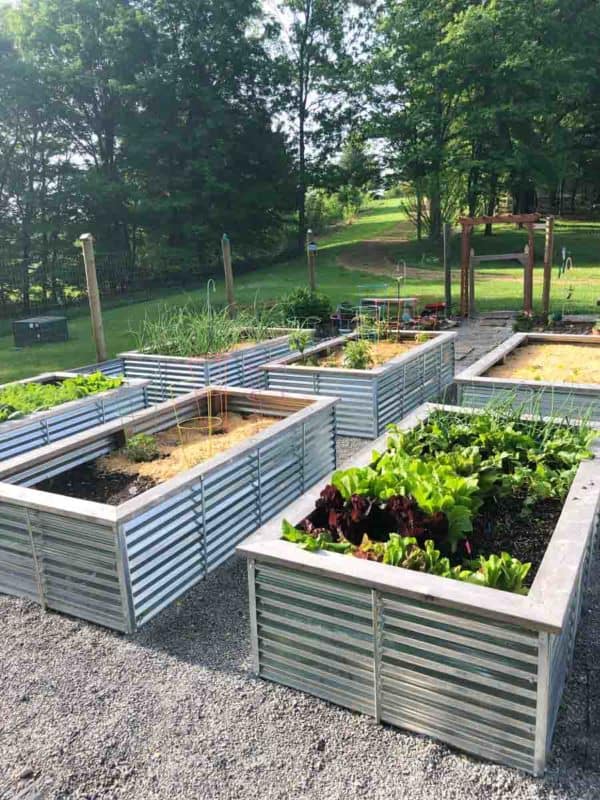When it comes to planning your garden, the garden location is the single most important aspect you can choose. You can always change what containers you grow in, you can amend your soil to make it better, you can change your plants—but unless you are growing strictly in containers, it is really difficult to move your garden once it is established.
Luckily, if you are starting your garden from scratch, you can pick the perfect location from the get-go! We’re going to cover the things to look for in your perfect garden location.
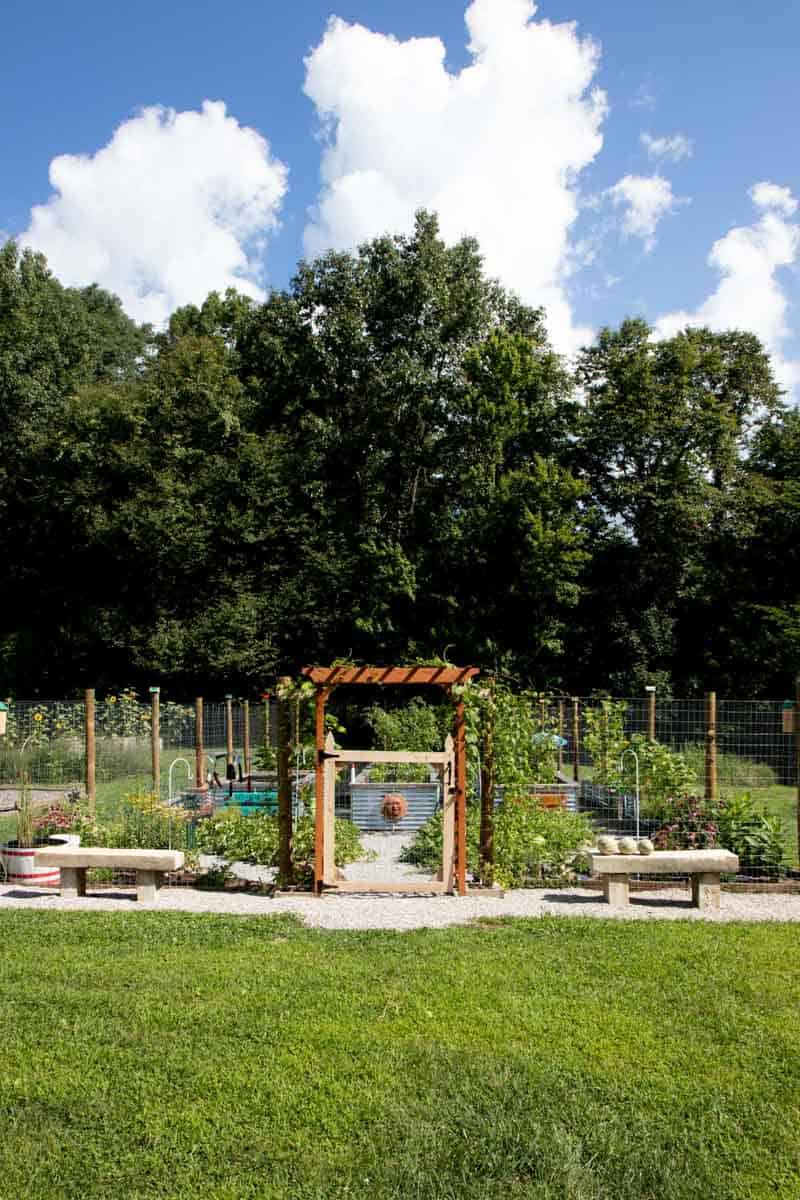
Sun Exposure
Probably the number one thing to consider when choosing your garden location is sun exposure. You can bring in water with a hose or watering can or irrigation system. You can amend the soil to improve its drainage or give it more nutrients. And you can put up fences or other barriers to fend off deer, squirrels, or other pests. But you can’t fake sun exposure!
Most vegetables, fruits, and herbs do best in full sun, which means they get at least 6-8 hours of sunlight a day. Some leafy greens and herbs can tolerate partial shade (4-6 hours of daily sun exposure), especially in climates where the days get hot in the summer, but almost nothing edible grows well in full shade.
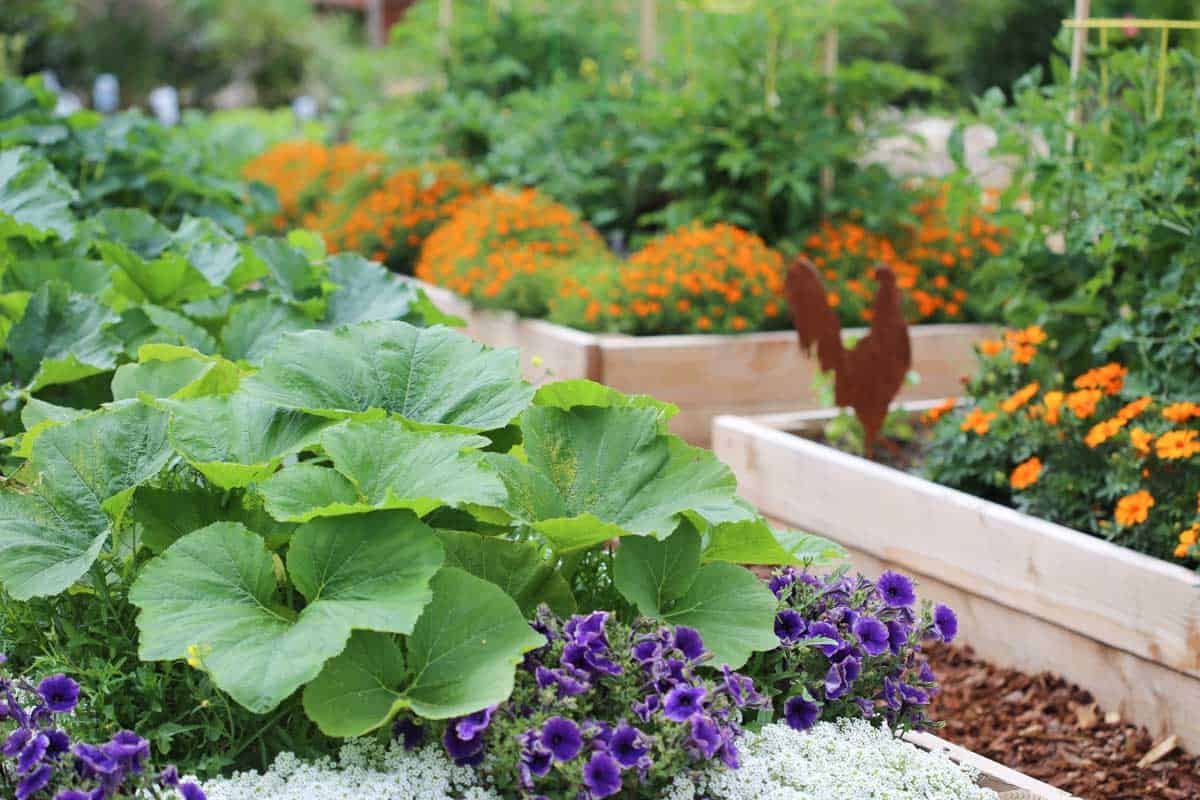
So before you do any digging or planting, watch your intended garden spot to observe the light situation throughout the course of a few days. You’ll also want to be aware of any nearby trees that will fill out with leaves as the seasons wear on that might cause a shade problem.
Also, keep in mind that depending on where you are in the hemisphere, the angle of the sun might change, too. For example, in the winter, our few front garden beds are actually shaded because the angle of the sun is so low, but come March, they are back in the sunshine again!
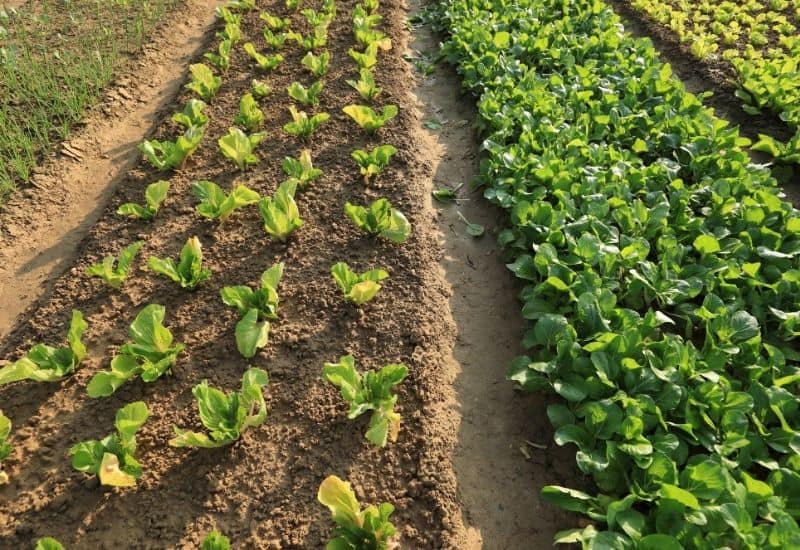
Generally, a south-facing garden is ideal if you can swing it, but if that’s not possible in your space, go with wherever your plants will get the best sun.
Water Access
You’ll need to water your garden. Even if you live in a perpetually damp area, you’ll still need access to running water to be able to water plants on occasion (like right after you plant seedlings). Before putting in your garden, ask yourself, do I really want to be running a watering can back and forth to this spot? Do I have hose access? Would I be able to put up a rain barrel nearby? As a general rule-of-thumb, your garden will need at least one inch of water per week—more during hot times. If it doesn’t rain, how are you going to get that water there?
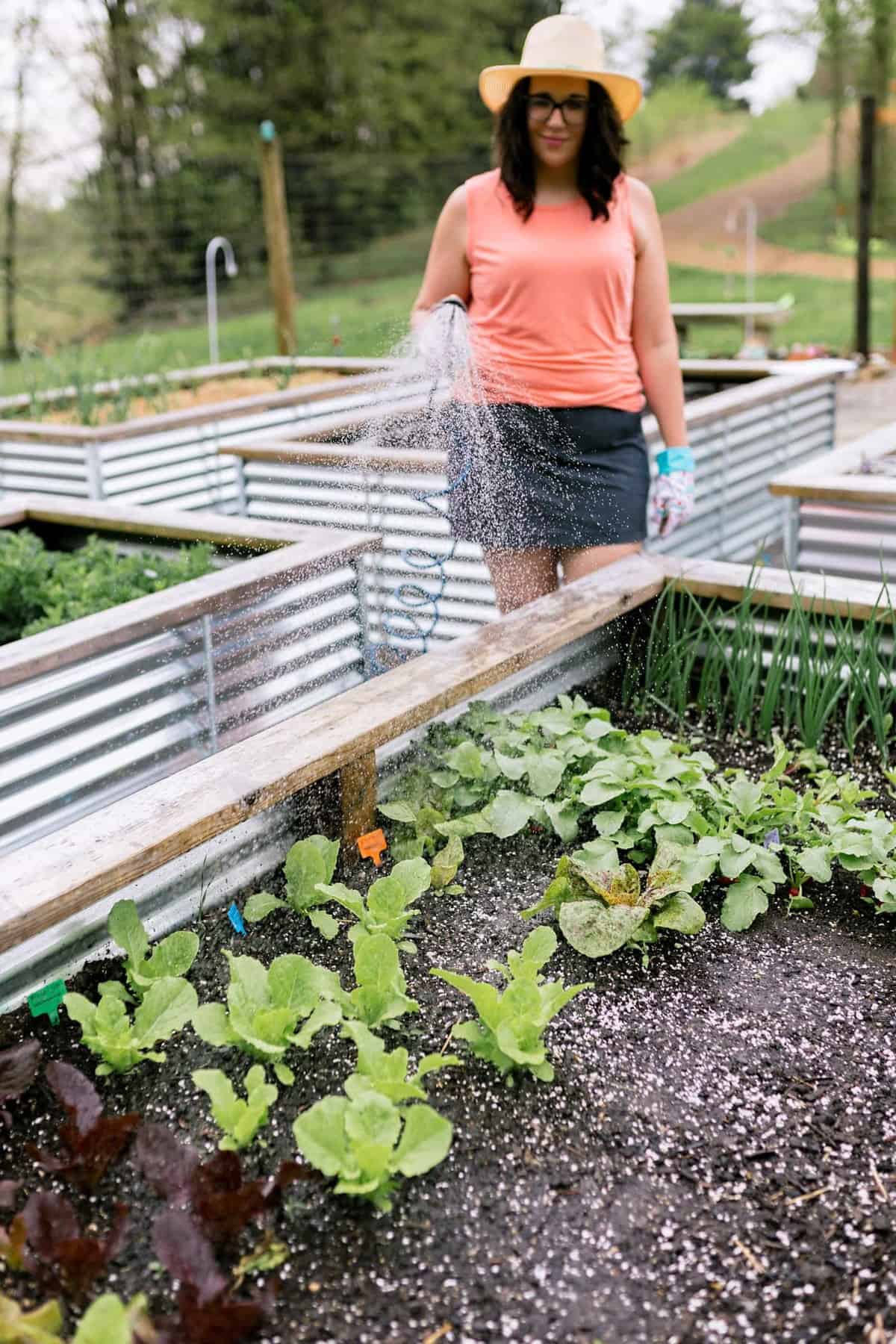
Drainage
Depending on your growing containers this can be more or less of a problem, but it is probably pretty obvious that you don’t want your garden in a place that is prone to flooding. If you choose to grow in tall raised beds or other taller containers, a garden that gets a bit mushy in the spring rains will probably be fine. But that spot in your yard that’s always muddy, even when it hasn’t rained in a week? That’s probably not the right spot for a garden.

There are ways to help fix drainage issues— you can create a base in your garden of sand and gravel with raised beds or containers on top. This allows the “floor” of the garden to be raised up so the water has a space to drain to. However, this set-up is a bit advanced for beginners—my recommendation from the start is to find a naturally well-drained spot.
Protection from Critters
It won’t take long for you to realize that critters of all kinds love to treat your garden like an all-they-can-eat buffet. The very best way to keep deer, bunnies, raccoons, dogs, and roaming chickens out of your garden is with a good, sturdy garden perimeter fence. If you already have a fenced in area of your yard, think about placing your garden plot inside of it.

If you plan on gardening for awhile, we highly recommend investing in a strong fence to save yourself countless tears of frustration! If the budget doesn’t allow for a permanent fence, a set up of deer fencing attached to T-posts with zip ties will help deter a lot of critters on the cheap—but it’ll need to be regularly mended. Trust me! We had this setup for years while we saved our pennies for our permanent fence, and it did the trick, but also required near weekly maintenance.
If a garden-perimeter fence isn’t in the plan, you can also protect your garden from wild critters by “fencing” or netting individual beds or placing the garden near areas that are frequented by people (the scent of humans can help dissuade wild critters from coming in).

Access to Your Garden Location
Chances are, you’ll be using your garden the most from your kitchen. If you have a large lot, are you really going to want to walk to the other end of your property just to pick some basil? Nope. You want to use that garden, which means making it as close to where you’ll be accessing it as possible.
Sometimes, this might mean breaking up your garden into a few different areas. We have an herb garden closer to our house that makes it easy to pop out and grab a few leaves of oregano for pizza, but our larger garden is a bit further away.

You also don’t want the garden to be so hidden away that you never see it—out of sight, out of mind. A well-maintained garden requires being touched almost every day in the summer. You need to weed, water, and harvest to keep things going. It can be really easy to forget a day or two (or a week!) if your garden isn’t easily visible.
Wind
When you start seedlings, you “harden off” your plants so that they get nice strong stems that can handle some wind. But at the end of the day, they are still just plants and strong wind can really give them a beating over the long term! You want to avoid garden spots that are constantly exposed to strong winds. Or, if they are, think of having a windbreak of some sort installed—some bushes, a fence, anything that’ll slow the wind. Another added benefit of slowing down the wind: less watering! Wind dries out beds faster.
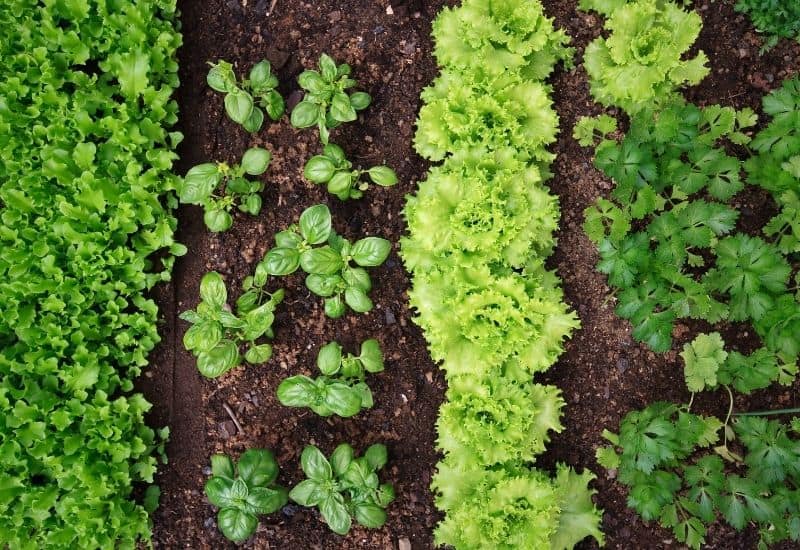
Special Things to Keep in Mind When Picking a Garden Location
- Lead paint: If you’re planting close to your house and it is an older house that may have been painted with lead paint, check your soil for lead before planting. Lead doesn’t biodegrade, so it will stick around for a long time. If you aren’t sure, go ahead and test—better safe than sorry!
- Lawn herbicides: If you’re digging up lawn to put in a garden, and your lawn has been treated with herbicide or weed-killer, you’ll likely want to opt for raised beds or containers. Those herbicides live in the soil for up to 10 years and can result in terrible crops in your garden. If you do go with raised beds, be sure to dig up the sod first before putting the beds down, and bring soil in from an organic location.
- Tree roots: Do you know how wide an established tree’s roots can spread? They often extend far past the crown, or branches, of the tree. So when you’re choosing where to put your garden, keep that in mind—plus, you don’t want the tree casting too much shade over your sun-loving veggies! Also, certain trees (like Black Walnuts) contain compounds in their roots that inhibit the growth of other plants.
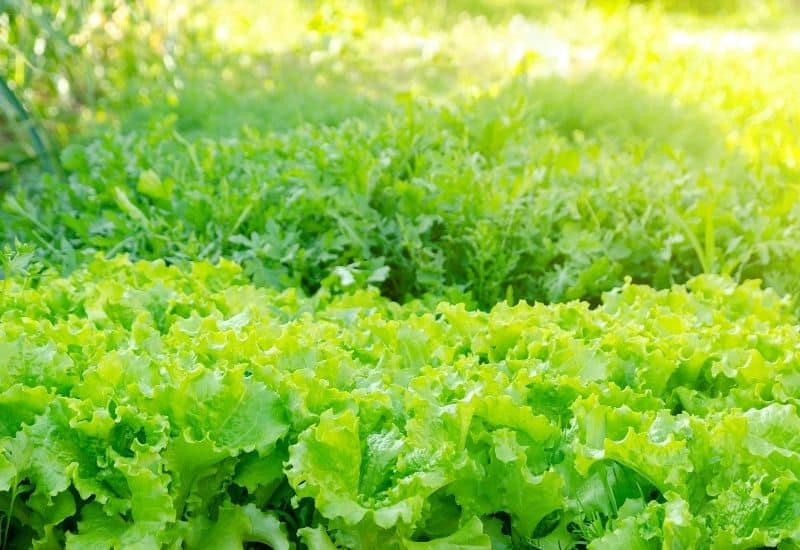
Consider Edible Landscaping
If you’re having trouble figuring out a good spot for your garden, maybe you already have one if you have landscaped flower beds! Edible landscaping is replacing or supplementing your current landscaped beds with edible plants. It’s a simple way to get started with gardening because the bed is already prepped and prime for growing, it naturally flows with the landscaping you already have, and it’s a great way to get veggies into the ground if you’re limited on space. Plus, some veggie plants are even more beautiful than flower plants! We love these two books for edible landscaping inspiration: The Beautiful Edible Garden and Edible Landscaping with a Permaculture Twist.
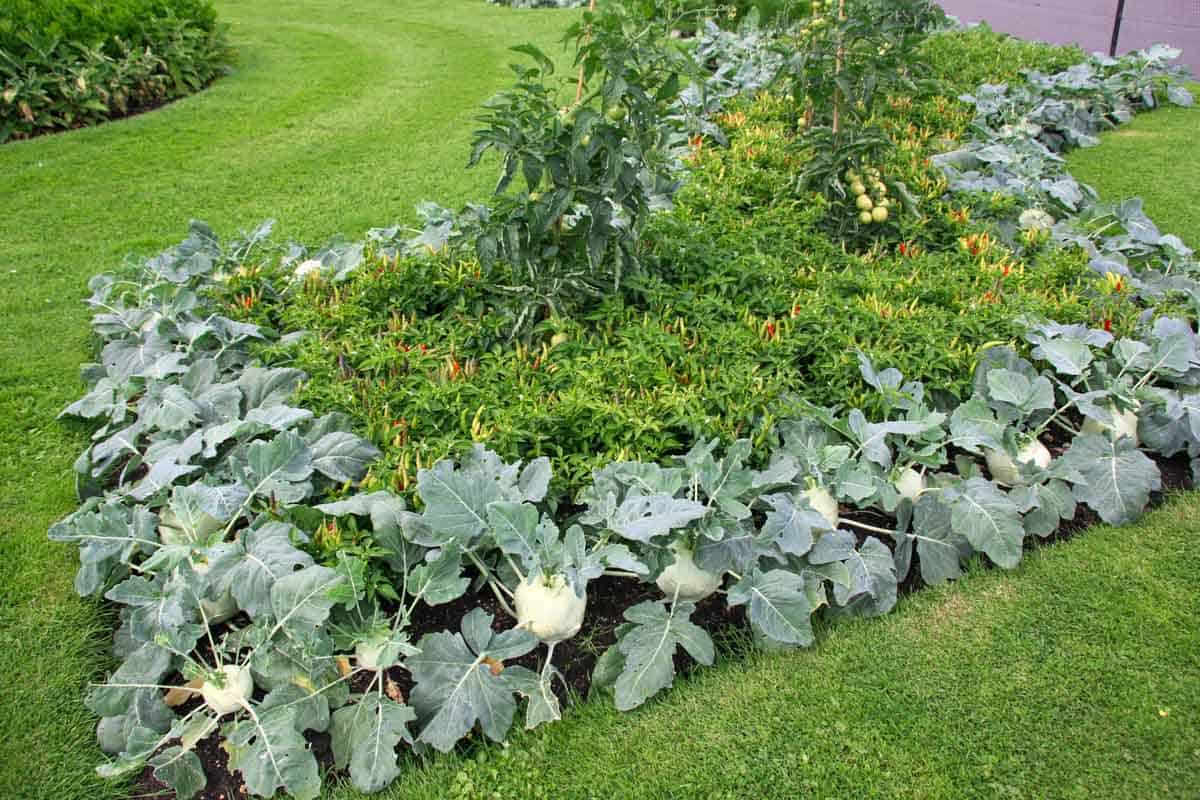
Growing on a Porch, Deck, or Patio
I started my gardening journey by growing in pots and hanging baskets on a sunny, west-facing concrete apartment patio. If that’s the only space you have, you absolutely can make an incredibly bountiful garden—even if you don’t check off all the qualities of a “perfect” garden!
You can read more about growing in containers in our post on deciding how to setup your garden, but just know that just as long as the sun hits an outdoor spot at your home—you can grow in it!

These are all things to consider when placing your garden, but they aren’t hard and fast rules! So if you can’t find a “perfect” spot, don’t let that deter you. Gardeners have made all kinds of less-than-ideal conditions work for them for centuries, and you can, too!

